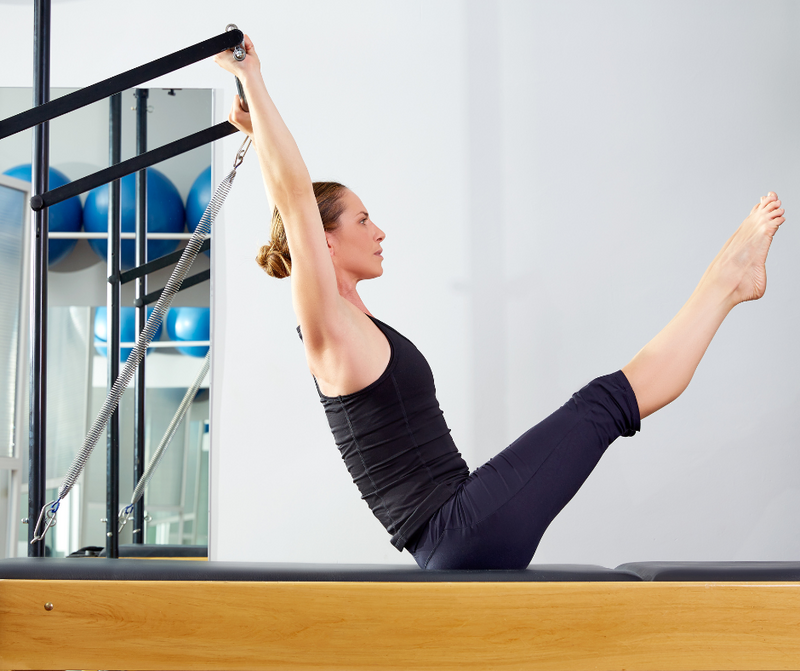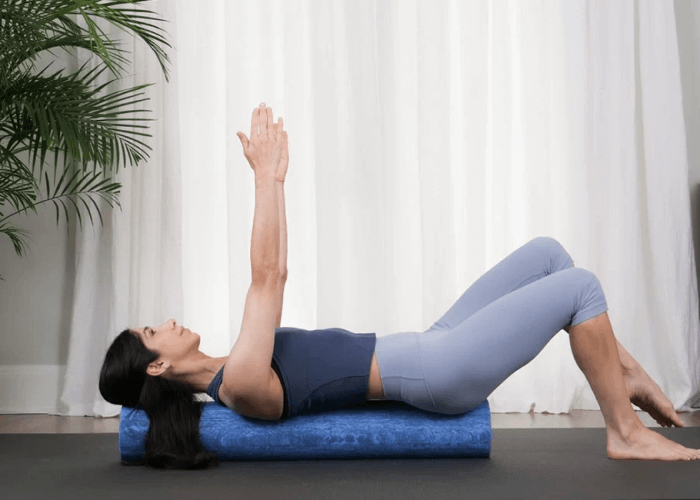The Ultimate Beginner's Guide To Pilates

If you’re wondering if a beginner can do Pilates, the answer is 100 percent yes!
Pilates is an effective low-impact workout that can be enjoyed by people of all ages and fitness levels. The slow and controlled movements help tone your body, build lean muscle, improve your balance and posture, and promote functional, pain-free movement throughout your life.
Here is a beginner’s guide to Pilates that will teach you everything you should know before you start a routine.
What is Pilates?
Originally called “Contrology,” Pilates is a form of exercise and body conditioning developed by Joseph Pilates in the early 20th century. It’s a workout focused on fundamental principles to counteract the adverse effects of modern life and is a go-to for injury prevention and recovery for dancers.
Pilates is rooted in strengthening muscles while improving postural alignment and flexibility.
Simply put, Pilates is a low impact — and low risk of injury — exercise system focused on core strengthening and balanced muscle development for the entire body, including its joints.
How is Pilates different from other exercise programs?
While most workouts emphasize the part of the body that is moving (like a bicep curl), Pilates brings equal focus to the areas that AREN’T moving. For example, while you may be working your arm or leg, your instructor’s cue will also bring your awareness to your torso to help you engage the core muscles needed for a well-aligned spine.
In a Pilates class, whether on a mat or the equipment, the focus is on working intensely with proper form, awareness, control, and breath. You will never do hundreds of repetitions of any moves, which can set your body up for injury.
Instead, the movement promotes longevity, strength, and health in your body as a whole. There will be fewer repetitions with optimal alignment, helping you to find the “burn” more efficiently.
This way of working will change how you approach other forms of exercise and movement in everyday life.
The History of Pilates
Ahead of his time, Joseph Pilates began creating his method, originally called Contrology (it was only changed to the Pilates Method after his passing in 1967 at the age of 83) in the early part of the 20th century.
Joseph Pilates was born near Düsseldorf, Germany, in 1883. Little is known about his early life, but he appears to have been a frail child, suffering from asthma, rickets, and rheumatic fever. However, his drive and determination to overcome these ailments led him to become a competent gymnast, diver, and skier, according to The Pilates Foundation.
In 1912, he lived in England, working as a circus performer, boxer, and self-defense instructor. During World War I — when he was interned with other German nationals — Pilates developed the technique of physical fitness that would become his namesake.
Pilates emigrated to the USA in the early 1920s with his wife Clara, and together they developed and taught the method in their 'body-conditioning gym' in New York in 1926.
The method became popular in the 21st century as people discovered its many benefits. Today his core method is still taught, as well as evolved forms integrating modern anatomical and biomechanical thinking by teachers globally.
Pilates has become a worldwide phenomenon, with more than 12 million people practicing, and the numbers continue to grow due to its effectiveness and adaptability.
The Principles of Pilates
Pilates’ most significant idea is that physical fitness is vital for overall wellbeing. He believed wellness incorporated the mind, body, and spirit.
“It is better to do five repetitions perfectly than 20 without paying attention,” he once said.
Here are the fundamental principles of Pilates training:
- Breathing: Breath is the link between the mind and body.
- Concentration: One must be present and in control of the movements.
- Control: To be in control is to maintain alignment, using your mind to control your form.
- Centering: All movement radiates from our center and is a defining characteristic of Pilates.
- Precision: Applying concentration and control brings precision.
- Balanced Muscle Development: The goal is improved posture, ease in the body, and enhanced physical abilities, achieved by working the body in a balanced way.
- Rhythm/Flow: The exercises are done with a smooth, graceful flow.
- Whole Body Movement: It is about a whole body experience, moving with clarity and purpose.
- Relaxation: In Pilates, we learn to use just the right amount of effort to do the exercises, which helps us find ease and flow in movement and life.
The Benefits of Pilates
What is pilates good for? It's a common question, and the answer is: a lot!
Pilates is known for working the body in a balanced way, developing a strong core, and promoting long and lean muscle development. It is also known for improving posture and flexibility.
1. Increases Core Strength
Pilates classes are commonly believed to be all about abs. And there is a hint of truth to that misconception. "Abs" and "core" are often used interchangeably. But there's more to core strength than a six-pack.
Strong core muscles help you maintain your balance, help you avoid awkward movement, and prevent unwanted strains or sprains. Pilates keeps your awareness of the core and alignment throughout a class, whether you are practicing mat exercises or exercises on special equipment designed by Joseph Pilates.
2. Improves Posture, Mobility, & Flexibility
Tight and weak muscles can create joint compression and pain.
Pilates workouts target weak and tight areas for improved spinal elongation and joint health.
The focus on alignment and good posture usually carry over into daily life. For example, Pilates teaches you how to move your limbs while keeping the spine stable as you do your day-to-day activities.
3. Decreases Back Pain
Ask any well-trained Pilates instructor, especially those focusing on teaching private lessons, and you’ll find that many of their long-term clients have become devotees of the method because of its positive effects on their low back pain.
Although some might call it a “cure,” it’s effective management.
More and more physicians and physical therapists are recommending Pilates for core strengthening. The method is so effective that many physical therapists are becoming certified to supplement their offerings for their patients!
Whether working with clients with scoliosis, after past surgeries, herniated discs, injuries, spondylolisthesis, or non-specific low back pain, I have seen firsthand how effective Pilates can be at helping to manage that pain so life can be enjoyed again.
4. Increases Energy, Boosts Mood, & Creativity
It’s no secret that most of us don’t get enough movement. Most Americans are typically in front of the computer, working or relaxing on the couch watching Netflix.
But we were made to move. It’s part of who we are. It’s the movement of fluid in your veins, the movement of your fingers, wrists, and arms as you complete daily tasks and the movement of your walk down the street as you head home after work.
Movement helps you get oxygen to your brain, improves mood, and increases creativity. As we age, movement can become more challenging. But, that does not mean it has to be.
By developing a strong mind-body connection with Pilates, we can use movement to defy aging and improve brain health, mood, and creativity.
Read More About How Movement Affects Your Brain, Your Creativity, & Your Mood
5. Builds Stronger Hips
Strong hip muscles are something most take for granted until weakness makes daily life more obviously difficult.
It’s common to embark on a fitness journey to get lean or tone up — but getting strong hip muscles is all-important for long-term wellness.
Having adequately strong hip muscles is vitally important to good posture, functional everyday movements (like walking and running, and getting up from a seated position), and maintaining hip stability for less wear and tear on our spines.
6. Decreases Stress & Improves Sleep
When you practice Pilates — and other types of exercises — your body produces endorphins that make you feel good. It's hard to feel sad or down when you are physically active and moving around with others.
Endorphins are chemicals in the brain that act as natural painkillers and they can also improve sleep quality, which in turn reduces stress.
Is Pilates Good for Weight Loss?
Since it was first introduced, hundreds of studies have proven its benefits for physical and emotional health. But, for a moment, let’s focus on weight loss — how does Pilates help you achieve long-term results?
Here are a few reasons: Building lean muscle mass increases your metabolism, allowing you to burn more calories at rest than you would if you had just exercised without building additional muscle tone. This steady stream of burn keeps going throughout your entire day — even while sitting at work.
It makes sense, right?! If your body works harder to maintain extra tissue (muscle), more energy is burned throughout your day. Increased muscle mass can raise your resting metabolic rate by as much as 30%.
Over time, those small boosts can add up. Combined with a healthy diet, Pilates can play an essential role in long-term healthy weight maintenance.
Read More About The Advantages of Pilates for Weight Loss
Types of Pilates
Mat Pilates commonly comes to mind when you think of the exercises. But that is just one type of Pilates.
The exercises are performed on a mat or using equipment or could be performed in a studio or at home.
Beginners should choose Level 1 classes and progress appropriately for their bodies. Even if you have done lots of other types of exercise, it is recommended that you take beginner classes to be sure you will get the most out of this method.
There are several different options to choose from, including:
CLASSICAL PILATES
This type of Pilates usually takes place in a studio. It closely follows Joseph Pilates's original moves. Pilates studios offer this type of workout. This kind of Pilates class follows a particular order of exercises as passed down to the first generation of teachers. If you want to learn the basics of Pilates and prefer a routine, this is a great place to start.
REFORMER PILATES
Invented by Joseph Pilates himself, The Reformer is a highly versatile exercise machine built to accommodate many different Pilates exercises. It’s beneficial for improving athletic performance and balance, injury recovery, and weight loss.
CONTEMPORARY PILATES
Many certified Pilates instructors today are trained in multiple modalities, including yoga and fascia-informed movement. They will infuse workouts with complementary exercises. As a result, students can enjoy the benefits of incorporating a therapeutic to athletic approach to traditional Pilates exercises.
ON-DEMAND PILATES CLASSES
Yes! You can get a safe and effective Pilates workout at home with — or without — equipment.
Joseph Pilates intended for his mat work to be performed daily at home and even invented a piece of equipment, the Balanced Body Wunda Chair, with home workouts in mind!
Whether you invest in a Wunda Chair or Reformer for home use or are committed to mat work as Pilates outlines in his Return To Life book, you will be rewarded with more confidence, improved posture, flexibility, and a stronger core.
My recommendation is always to see your physician for clearance and any guidance that may apply specifically to you before starting a routine.
Take 5% Off The Balanced Body Wunda Chair
3 Popular Pilates Exercises
In his 1945 book, Pilates outlined the 34 original exercises that Pilates taught to his students are described along with the guiding principles of Contrology. There are hundreds of variations today, but these remain among the most identifiable pilates exercises.
THE HUNDRED
This is a quintessential Pilates move and requires a strong core and coordination of breath. It is named after the beating motion of the arms up and down and was Joseph Pilates' first exercise in mat work. The arm's percussive movement and expansive breathing energize and warm the body, preparing it for the rest of the class.
SINGLE LEG STRETCH
The single leg stretch helps strengthen your core and improve your endurance. It strengthens the abdominal muscles, stretches your hips, and helps build coordination in the body.
THE ROLL-UP
The roll-up stretches your back and legs while challenging your abdominal muscles. It promotes deep breathing, which increases blood flow and circulation. Roll-ups are one of the most challenging moves, and there are many modifications to suit everyone’s Pilates journey.
Create the Right Space for Pilates
We know consistency is key to achieving our long and short-term goals. Still, everyday distractions often derail our best intentions, especially when establishing a regular at-home movement practice. This is why thoughtfully setting up your home for a pilates practice is so helpful.
Creating a space for movement can help you sidestep roadblocks that might delay your at-home practice. Whether you are exclusively working out at home or supplementing your in-person studio classes with on-demand pilates training, these five tips will help you easily set up your home for movement to reach your wellness goals.
Try Pilates For Free
Now that you've read this beginner's guide, why not give Pilates a try?
You can try out Pilates — and other fitness classes in our on-demand library — by signing up for the 7-day free membership trial here.
Before long, you'll be a Pilates pro.
Let's Stay In Touch!




